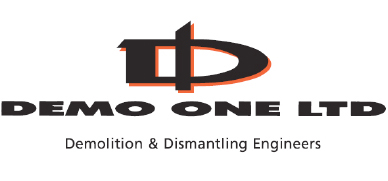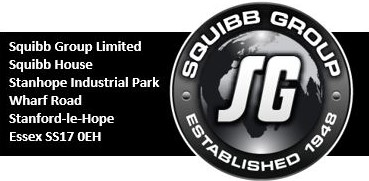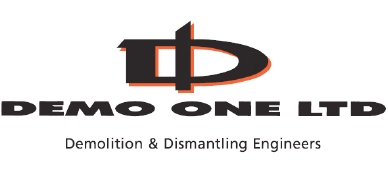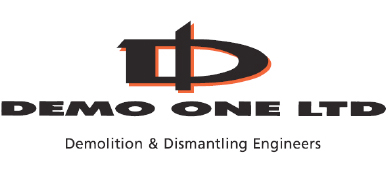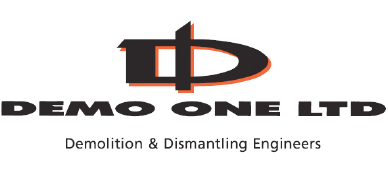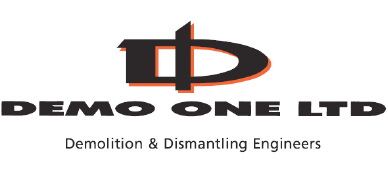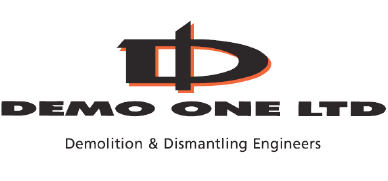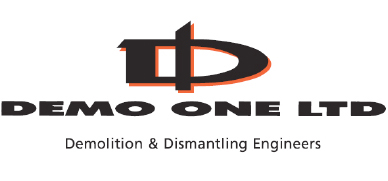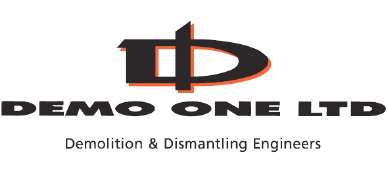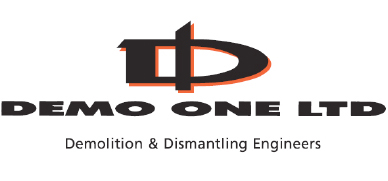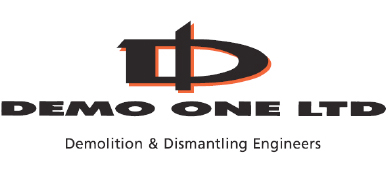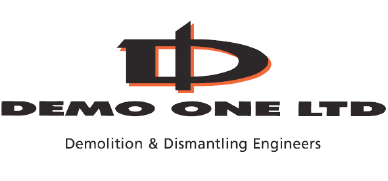Title Page
-
Job Number
-
Client Name
-
Project Title
-
Site Address
-
Audit Date
-
Auditor
-
Site Personnel
-
Location Geographic Coordinates
1. SCOPE OF WORKS
-
1.1 Is the ASB5 notification on site?
-
1.2 Is the plan of work on site?
-
1.3 Is the plan of work site specific?
-
1.4 Do the plan of work and ASB5 accurately define the extent and type of ACM being removed or worked upon and its condition? Please specify.
-
1.5 Are the details of the asbestos survey included in the plan of work? What type of survey was carried out, by what organisation and when? Is the survey appropriate for the planned scope of work?
-
1.6 Are there any other licence holders involved in the contract? If yes, are they detailed in the ASB5 form?
2. PRELIMINARIES
-
2.1 Is the name of the Contract Supervisor given in the ASB5 and plan of work the same?
-
2.2 Is he based full time on site? If not, is it stated that he will be on site for all key tasks? i.e. daily checks, smoke test?
-
2.3 Does the plan of work contain details of who is authorised to amend the plan of work?
-
2.4 Are there any variations on site from the plan of work and sketch plan? Have the variations been properly recorded in the plan of work?
-
2.5 Does the site supervisor receive regular visits from the company safety officer and/or senior management and if so do they conduct a safety inspection/action report whilst on site? Is there supporting written evidence? If so, are there any outstanding actions?
-
2.6 How is information passed between the site supervisor and client/occupier and any other parties affected by the work?
3. SITE DOCUMENTATION
-
3.1 Is a copy of the contractors asbestos removal licence on site? What is the licence number and expiry date? Are there any restrictions on the licence?
-
3.2 Is there a valid copy of the contractor's Employer's Liability & Public Liability insurance policy on site? What is the expiry dates?
-
3.3 Does the plan of work contain the client's name and details whom the contractor is working for?
-
3.4 Does the plan of work give start and finish dates for the work to be carried out? Does this include the working hours and any weekend working? Do these agree with the ASB5 notification?
-
3.5 Does the plan of work give details of the air monitoring strategy for the duration of the works? Please give details.
-
3.6 Does the plan of work give the name and details of the organisation who will be undertaking the air monitoring and 4-stage clearance?
-
3.7 Is the organisation UKAS accredited for Testing and what is their accreditation number? Are they appointed by the client?
-
3.8 Has the smoke test been carried out? Who witnessed it? Was it an independent witness? Are the results of the smoke test and witness signature recorded?
-
3.9 Were any corrective actions necessary as a result of the smoke test and were they recorded?
-
3.10 Are the removal techniques and control measures suitable for the type of work and asbestos material?
-
3.11 Are the contractor's standard operating procedures for asbestos works available on site?
-
3.12 Do the procedures include transiting and decontamination? Are they in line with the Approved Code of Practice [ACoP]?
-
3.13 Is there a procedure available for: Set up of DCU, including use of propane gas?
-
3.14 Is there a procedure available for: Medical emergencies within the enclosure?
-
3.15 Is there a procedure available for: Waste bag split?
-
3.16 Is there a procedure available for: Disposal of asbestos waste?
-
3.17 Is there a procedure available for: Use of injection equipment/suppressant?
-
3.18 Is there a procedure available for: Cleaning the DCU and the PPE/RPE to wear while doing so?
-
3.19 Is there a procedure available for: Removal of tools and equipment on completion of the works?
-
3.20 Is there a procedure on site for precautions to be taken when preparing for and transporting negative pressure units and vacuum cleaners to and from site?
-
3.21 Is there a site diary available for inspection? Is it up to date?
-
3.22 Other than the above, does the plan of work contain adequate instruction on emergency procedures? Do they include fire, accident, accidental disturbance of asbestos, breach of 'live' enclosure, failure of NPU? Are they site specific?
-
3.23 Other than the specifics covered above, does the information in the ASB5 correspond with that detailed in the plan of work?
4. RISK AND COSHH ASSESSMENTS
-
4.1 Does the plan of work include a job specific risk assessment?
-
4.2 Are the risk assessments suitable and sufficient?
-
4.3 Does the plan of work include a list of hazardous materials being used on site which require a COSHH assessment?
-
4.4 Are COSHH assessments appropriate with data sheets available?
5. SITE SUPERVISOR AND OPERATIVES
-
5.1 Have the operatives on site signed to say they understand the plan of work?
-
5.2 Are the number of personnel on site appropriate for the scope of work being carried out?
-
5.3 Are the training records available for all personnel on site? Do the training certificates include a clear image of the worker and are they in date?
-
5.4 Are the face fit records available for all personnel on site?
-
5.5 Are all personnel on site clean shaven or have face fits appropriate to their appearance? i.e. goatees within the mask seal are acceptable if present when the face fit test was undertaken.
-
5.6 Are in date medical records available for all personnel on site?
-
5.7 Unless the personnel work directly for the company and their certificates say as such, have all copies of certificates and/or documents been authenticated by the company who notified and are licensed to undertake the works?
6. SITE ORGANISATION
-
6.1 Does the site set up match the sketch plan in the plan of work?
-
6.2 Does the sketch plan show all necessary information and is there a key?
-
6.3 Do the viewing panels and/or CCTV allow ALL areas of the enclosure, airlock and baglock to be viewed clearly and distinctly?
-
6.4 Do all viewing panels have minimum dimensions of 600m x 300mm?
-
6.5 How do the outside men and personnel working within the enclosure communicate with each other? Is this suitable?
-
6.6 Have suitable barriers and warning signs been erected/displayed before work commenced? Do they clearly show respirator and/or asbestos zones?
-
6.7 What arrangements/facilities are available for first aid? Who is the trained first aider on site and do they have proof of in date competency?
-
6.8 Have adequate provisions been provided for personnel welfare on site? i.e. toilets, availability to have hot drink, warm food etc.
-
6.9 Are transit/waste routes as short as possible? Are they clearly identified and labelled with warning signs?
-
6.10 Do transit/waste routes avoid occupied areas where possible?
-
6.11 Where additional information is learnt during the work, is this fed back to management and recorded? Are hold points used prior to commencement of each stage?
7. PLANT AND EQUIPMENT
-
7.1 Do the air management figures and calculation appear to be correct? Are they in line with ACoP of at least 8 air changes per hour for enclosures greater than 120m3 or an airflow of at least 1000m3 for enclosures less than 120m3?
-
7.2 Does the number and size of NPU on site match that detailed in the plan of work?
-
7.3 Is the number and size of NPU being used sufficient to achieve the minimum required airflow?
-
7.4 Is the NPU venting to an external atmosphere? If not, what arrangements are in place for leak monitoring?
-
7.5 Is there physical evidence sufficient negative pressure is being generated into the enclosure? Does the NPU comply with BS8520-2:2009 (i.e. in date DOP test etc.)?
-
7.6 Are there at least two H-Type vacuums within the enclosure?
-
7.7 Do the H-Type vacuums have valid and in date DOP certificates?
-
7.8 Does all portable electrical equipment have in date and recorded PAT testing ?
-
7.9 Are the daily inspection records for all plant and equipment available for inspection and up to date?
8. ENCLOSURE, AIRLOCK AND BAGLOCK
-
8.1 Is the enclosure constructed robustly? Is the integrity being maintained?
-
8.2 Are all non impervious surfaces within the enclosure covered?
-
8.3 Is there a designated emergency exit? Does it provide an unobstructed route to a safe haven?
-
8.4 Is there a separate baglock? If not, is there a written justification as to why not?
-
8.5 Are the openings in the airlock and baglock of sufficient size and are the flaps fitted correctly with sufficient weight?
-
8.6 Are the cube dimensions of each stage of the airlock and baglock at least 1m (width) x 1m (length) x 2m (height)?
-
8.7 Are there separate buckets (with sponges) and/or a hand held sprayer available for preliminary decontamination of boots/masks in the dirty end of the airlock?
-
8.8 How is the water from the buckets disposed of?
-
8.9 Is there an H-Type vacuum (with brush attachment) available for preliminary decontamination adjacent to the dirty end of the airlock?
-
8.10 Is the Airlock and Baglock free from visible debris?
-
8.11 Are the correct warning signs/tape displayed in sufficient numbers on the airlock, baglock and enclosure?
-
8.12 Is there a record kept of enclosure inspections and any required actions? How often is the enclosure inspected i.e. daily, twice a day etc.?
-
8.13 Do the airlock and baglock have a suitably signed and external flap attached?
9. DUST SUPPRESSION
-
9.1 Are the removal techniques and other control measures (being employed for dust suppression) as that described in the plan of work and ASB5 notification?
-
9.2 Are the techniques being used appropriate for the type of work and ACM ?
-
9.3 Where needle injection is specified, is the needle injection pattern defined in the plan of work and is it effective
-
9.4 How are checks made to ensure the ACM is sufficiently soaked prior to removal?
10. RPE AND PPE
-
10.1 Does the plan of work detail the type of RPE to be used during the removal of asbestos?
-
10.2 Is the type of RPE being used as per that detailed in the plan of work? Is it being worn correctly?
-
10.3 Is the RPE appropriate for the type of work?
-
10.4 Are all items of RPE uniquely identified? Does this apply to half masks as well as power assisted respirators? Give details of method used.
-
10.5 Are inspection and maintenance records available and up to date? Is the RPE inspected before each use?
-
10.6 Is the RPE adequately clean before suitably stored?
-
10.7 Are all disposable overalls Category 3 Type 5/6 and are they being worn correctly?
-
10.8 Are all overalls being worn in the correct colour (for each stage of work) as stated in the plan of work?
-
10.9 What type of RPE and PPE is used for removing waste bags from the enclosure to the waste container?
-
10.10 Is any other PPE required? Is it being used in accordance with current risk assessment? Please give detail.
-
10.11 Has the correct PPE and RPE been supplied in accordance with COSHH? Explain how/show evidence?
11. HYGIENE FACILITY DECONTAMINATION UNIT [DCU]
-
11.1 Is the DCU connected to all services and fully operational?
-
Photo of operational and fully functional DCU must be taken.
-
11.2 Is the DCU located as per the sketch in the plan of work?
-
11.3 Are the clean and dirty ends clearly identified?
-
11.4 If the DCU is not directly connected to the enclosure, has this been justified in the plan of work and is it as close as reasonably practical?
-
11.5 Is the DCU earthed? If yes, how? i.e. RCD plus mains supply or generator and earth strap?
-
11.6 Is the waste water filtered correctly? How often is the filter changed and is this recorded?
-
11.7 Is water discharged to a foul drain? Is this adequate?
-
11.8 Is the DCU locked when not in use?
-
11.9 Does the DCU have an air clearance certificate from when it was last used during a 4-stage clearance?
-
11.10 Do the doors self close? Are they adequately sealed? Is there a mirror fitted in the clean end?
-
11.11 Is there a carbon monoxide [CO2] monitor in the clean end (where applicable)?
-
11.12 is there a record kept for the DCU and any actions? How often is the DCU inspected?
-
11.13 How often is the DCU cleaned?
-
11.14 Does the DCU have a current certificate to say the boiler was serviced by a registered Gas Safe engineer?
-
11.15 Is all electrical equipment PAT tested and in date?
-
11.16 Is there a valid and in date DOP certificate for the NPU in the dirty end?
-
11.17 Does the NPU meet the requirements of BS8520-2:2009, including a non-return flap?
-
11.18 Is the DCU clean, with no clothes or equipment stored in the wrong areas?
-
11.19 Are there sufficient showerheads for the number of operatives on site [ratio is 1 showerhead : 4 operatives]?
-
11.20 Are the showerhead holders fixed in place and undamaged to allow showering without having to hold the showerhead?
-
11.21 Are sufficient towels, liquid soap and nailbrushes provided?
-
11.22 Where do operatives dry themselves? What is done with used towels?
12. WASTE
-
12.1 Are the arrangements for the disposal of waste as per that detailed in the plan of work?
-
12.2 Are transit and waste routes free from asbestos debris?
-
12.3 Are copies of consignment notes available for inspection?
-
12.4 Where is the waste double bagged?
-
12.5 If any of the contractor's vehicles are used to transport waste, are they suitable for this purpose? i.e. sealed bulkhead and the back polythened out?
-
12.6 Are air monitoring records available for vans used for waste transportation and do these include the cabin area?
-
12.7 Is there a dedicated asbestos skip on site that is fit for use? If not, what other procedures are in place for storage and transportation of waste?
-
12.8 Is the skip kept locked when not in use?
-
12.9 Does the skip display appropriate warning signs?
-
12.10 Is all the waste inside the skip appropriately labelled and double bagged/wrapped?
-
12.11 Is there any inappropriate material in the skip?
13. WORK PRACTICES AND SITE CONTROL | NON-ASBESTOS RISKS
-
13.1 Have non-asbestos risks been included in the ASB5 notification?
-
13.2 Working at height - are there adequate control measures in place and are they being implemented?
-
13.3 Live services - are there adequate control measures in place, are they being implemented and are the isolation certificates available for inspection?
-
13.4 Manual handling - are there adequate control measures in place and are they being implemented?
-
13.5 Noise - are there adequate control measures in place and are they being implemented?
-
13.6 Hand Arm Vibration Syndrome (HAVS) - are there adequate control measures in place and are they being implemented?
-
13.7 Site vehicle movement - are there adequate control measures in place and are they being implemented?
-
13.8 Other contractor's activities - are there adequate control measures in place and are they being implemented?
-
13.9 Thermal issues - are there adequate control measures in place and are they being implemented?
-
13.10 Other significant risks on site - are there adequate control measures in place and are they being implemented?
14. SCAFFOLDING
-
14.1 Does the contractor have the Compliant Scaffold Sheet as built to TG20? Or is it a design scaffold?
-
14.2 Does the Contractor have the Handover Certificate on site?
-
14.3 Are they overloading the scaffold in any way?
-
14.4 Is the scaffolder implementing good general site housekeeping with clear access/egress?
-
14.5 Has the scaffold been checked weekly by a qualified, competent person and a record kept?
-
14.6 Are the scaffold company members of the National Access & Scaffold Confederation [NASC]?
Summary, Comments and Sign Off
-
Summary and any additional comments
-
Site Supervisor to sign once site audit findings and any required actions have been explained
-
SITE AUDIT IS COMPLETE
-
Auditor to sign on completion of site audit
-
